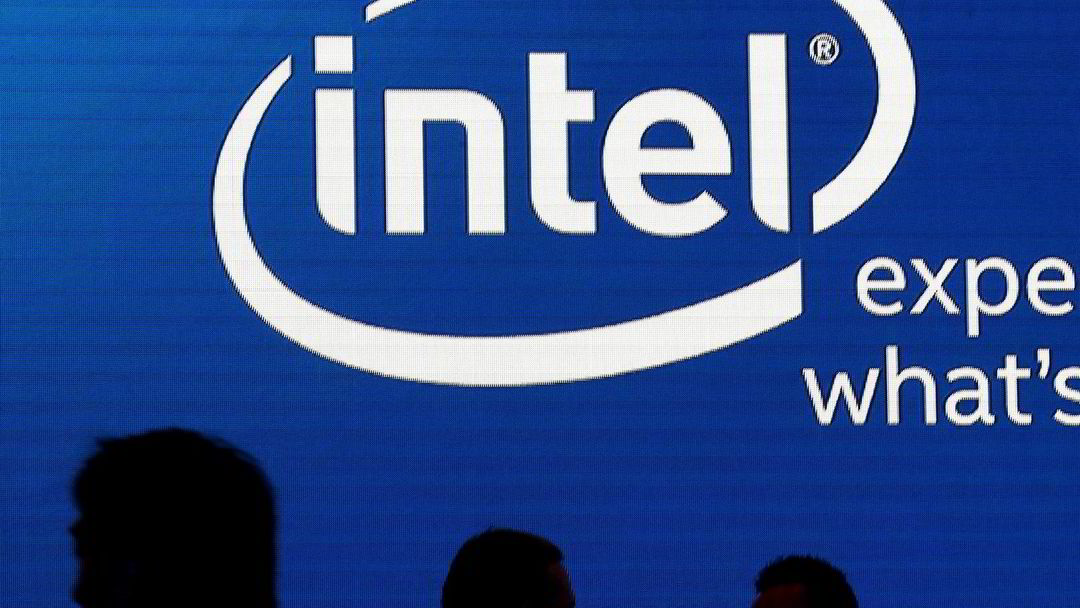On Thursday after the stock exchange closes, it is the turn of the American pioneer in the production of microprocessors Intel to deliver results for the first quarter. Ahead of the delivery, the predictions for the company were gloomy.
The market expected the company to present the biggest quarterly drop in sales ever, due to failing sales of computers and increasing competition.
The quarterly figures also proved to bear the stamp of this very thing and the turnover ended up at 11.7 billion dollars, which was an improvement from the analysts’ estimates of 11.04 billion dollars. At the same time, Intel posted a net loss of $2.8 billion, compared to a profit of $8.1 billion last year. It is the fifth consecutive quarter of declining sales for the microprocessor giant and the second consecutive quarter of losses.
This is also the largest quarterly Intel loss ever and surpassed the fourth quarter of 2017, where Intel reported a loss of $687 million. Despite this, the share rose 3 percent in after-hours trading on Wall Street.
Proud past, uncertain future
Intel was founded in 1968 by physicists Robert Noyce and Gordon Moore, the latter the man behind Moore’s Law – which states that the number of transistors in an integrated circuit will double every year. The company developed into the leading supplier of microprocessors for computers and has been among America’s most valuable companies for a number of years.
But the company has encountered new obstacles in recent decades. Intel has lost significant market shares to technology giants such as Samsung and Apple and not least to the Taiwanese business miracle TSMC, which today accounts for almost the entire production of the world’s most advanced microprocessors. Furthermore, the company has experienced falling demand as people have moved from their home office in the wake of the corona pandemic.
Perhaps even more seriously, Intel chose to stop investing in the development of EUV lithography – a technology that makes it possible to pack more computing power onto the silicon wafers microprocessors are cut from. This would turn out to be a gigantic mistake. It ended with Dutch ASML crossing the finish line first and is today the only company that manufactures machines that can carry out EUV lithography. ASML today has a market value of almost twice that of Intel.

President Joe Biden with workers at the groundbreaking new Intel microprocessor factory in Ohio. (Photo: Manuel Balce Ceneta/AP/NTB)
Now Intel finds itself in the middle of a geopolitical game between the United States on the one hand and China on the other. Through the federal statute CHIPS Act, Joe Biden wants to move the center of production of microprocessors from Taiwan back to the United States through massive subsidies, of which Intel is one of the main beneficiaries. At the same time, Biden has orchestrated a technology barricade that prevents China from importing technology and software to produce its own microprocessors. In 2022, the Biden administration notified American citizens who worked in the Chinese microprocessor industry that they would have to quit their jobs or renounce their citizenship.
AI race
The microprocessor industry is also experiencing major changes in customer needs due to the rise of artificial intelligence. After Open AI’s successful launch of Chat GPT, the Intel competitor Nvidia in particular has fallen sharply on the stock exchange and is now threatening to put the traditional PC and server chips on the sidelines.
On Wall Street, investors have shown increasing confidence in Nvidia’s ability to become the market leader in the production of microprocessors for artificial intelligence. The company has risen 85 percent on the stock exchange and has a stock market value that is more than five times that of Intel.
In the face of the demanding market conditions, CEO Pat Gelsinger has decided to carry out a number of cost cuts and, among other things, has fired a number of employees with the aim of saving up to 10 billion dollars annually by 2025. At the same time, the company is trying to diversify its operations towards new micro-processing equipment.
(Terms)Copyright Dagens Næringsliv AS and/or our suppliers. We would like you to share our cases using links, which lead directly to our pages. Copying or other forms of use of all or part of the content may only take place with written permission or as permitted by law. For further terms see here.
2023-04-27 20:15:00
#Intel #historic #revenue #loss #rises #aftermarket
